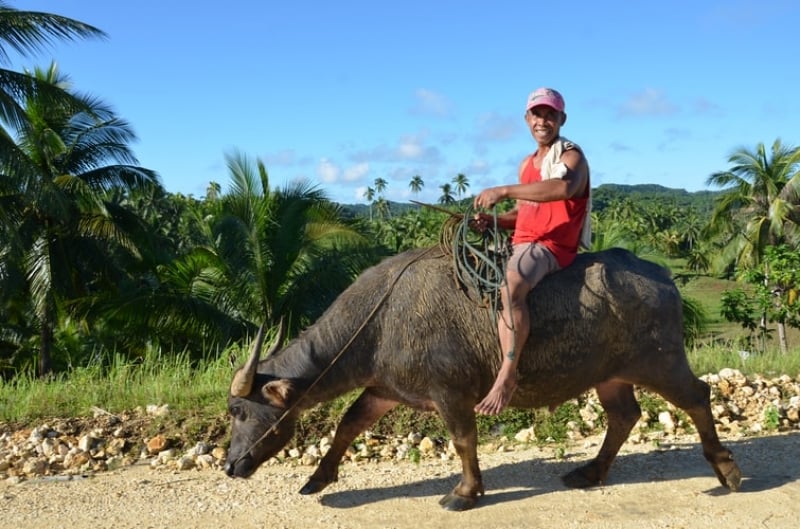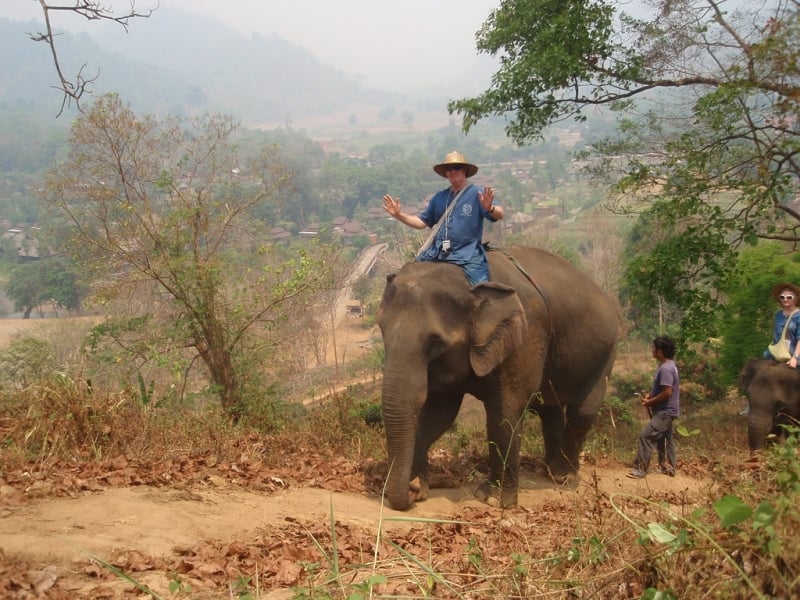National animals can mean so much to a country. Like the bald eagle of the U.S.A or Russia’s brown bear, a national animal often symbolises and encapsulates the values of a nation. It elicits both pride and wonder and is the inspiration behind many a country’s name and cultural identity.
Today, let’s take a look at the national animals of Southeast Asian countries and where you can see them in person!
Also read: The World’s Most Colourful Animals & Where to Find Them!
The majestic lion of Singapore

Image credit: Francesco De Tommaso
Let’s start with a fun fact: Did you know that Singapore comes from the words “Singa” and “Pura” which means Lion City? It’s no surprise then that the national animal of Singapore is none other than the majestic king of the jungle: the lion! It symbolises courage, excellence, and strength, a powerful reflection of the island nation’s national values.
It may come as a surprise to some, but apart from the iconic Merlion statues, there have actually never been any wild lions in Singapore. Instead, if you want to watch these endangered animals in person, you can head to the Singapore Zoo. In fact, just last year, the zoo welcomed its first-ever lion cub conceived through “assisted reproduction”! And yes, the adorable cub was aptly named “Simba”!
Simba currently lives with its mother, Kayla, in a private enclosure. However, eventually, it will move in with the rest of the pride in the lion exhibit.
The fierce Malayan Tiger of Malaysia

Image credit: Hollasue
Singapore’s next door neighbour, Malaysia, also boasts a rather fearsome national animal. The Malayan tiger is much smaller in size than its more famous Bengal cousins. However, it is known for its courage and strength, a symbol of the Malaysian people. Depictions of the Malayan Tiger are on the Coat of Arms, and in the logos of several Malaysian institutions like Maybank and Proton. The national football team is also called Harimau Malaya, meaning the Malayan Tiger.
Sadly, like many of the other animals on this list, the Malayan Tiger is critically endangered, with only about 500 of these majestic beasts remaining in the wild. Occasionally, these big cats DO wander into villages bordering dense forests but the safer way to “meet” them is by visiting zoos like Zoo Negara or the Melaka Zoo. In addition, you could also take a trip to national parks like Taman Negara. If you’re lucky, you may just be able to spot them in their natural habitat.
It goes without saying though that you probably shouldn’t try to pet them.
The ancient Komodo Dragon of Indonesia

Image credit: David Clode
Indonesia’s most popular national animal is the Komodo Dragon. Found only in Indonesia, mostly on the islands of Flores and Komodo, these endangered reptiles are expert swimmers that also have enough venom to put a fully grown buffalo to sleep. And I don’t mean tucking them in for bed.
The best place to see Komodo Dragons is Komodo National Park, just east of Bali. There are specific tours that specifically allow you to observe these massive lizards in a safe environment so I’d make use of that.
In addition, the Asian Arowana and Javan Hawk Eagle are also national animals in Indonesia. The colourful arowana mostly lives in the Kapuas River and in lakes in West Kalimantan; while the national bird of Indonesia, also known as garuda, is often spotted in the mountain forest regions of Java.
The strong carabao of The Philippines

Image credit: Beth Macdonald
The (unofficial) national animal of The Philippines is the carabao, a native species of water buffalo that symbolises strength, power, and perseverance. Unlike most of the other animals on this list, the carabao can actually be found quite easily in agricultural villages on the larger islands of The Philippines. In fact, in Luzon and South Cotabato, carabao racing events are also held regularly by farmers during festivals!
Another animal that holds a special place in the hearts of Filipinos is the Philippine Eagle. This beautiful bird is one of the largest species of eagles in the world and is native to the northern and eastern regions of the country. With only about 400 – 600 of them left in the wild, the Philippine Eagle is critically endangered, and only by visiting conservation centers like Northern Sierra Madre National Park in Luzon and the Philippine Eagle Center in Davao City will you be able to spot them.
Also read: Here Are 12 Things You Should Know About the Philippine Eagle!
The hardworking water buffalo of Vietnam

Image credit: ctrlaltdileep
As a country that is heavily reliant on agriculture, it’s no surprise the national animal of Vietnam is the water buffalo. The water buffalo represents strength, perseverance and is valued for its pivotal role in the country’s economy.
Much like the carabao of The Philippines, Vietnam’s national animal is quite common, especially in rural areas of the country. Most people who want to get up close and personal with these mammals head to Hoi An where there are special tours that allow you to ride one.
Note: We do not condone nor condemn riding animals as a tourist activity. It is simply available to those who wish to try it.
The revered elephant of Thailand

Image credit: Doug Beckers
Throughout Thailand’s rich cultural history, the elephant has always played an integral part. From lending a helping hand (or trunk) in logging and transportation to taking part in parades and even marching into war, elephants are highly-revered animals in the Land of Smiles. There are even local myths of Gods riding these national animals as they descend from the Heavens!
Sadly, there is an estimate of only between 3,000 to 4,000 elephants in Thailand, pushed to the brink of extinction thanks to encroachment and illegal poaching. Because of this, I think the only acceptable way to spend time with these beautiful creatures is by visiting the elephant sanctuaries spread throughout the country. Elephant Nature Park in Chiang Mai is arguably one of the best you can visit as a tourist.
The beautiful Indochinese Tiger of Myanmar

Image credit: Josh More
Myanmar’s national animal is, in my opinion, one of the most beautiful. It is the Indochinese tiger, found specifically in the areas of Myanmar, Laos, and Thailand. It is slightly bigger than the Malayan Tiger and boasts a more vivid colour on its coat. Occasionally, you might even come across an albino (white) one.
However, that will be extremely rare given that these beautiful creatures are on the brink of disappearing. With only about 85 of them left in Myanmar, and only a couple hundred others scattered across the region, the national animal of Myanmar faces an uphill battle to survive. Compared to other tigers, they also have the least numbers in captivity; which means that, arguably, the only place you can see these tigers is at the Yangon Zoo.
The prosperous Indian elephant of Laos

Image credit: TheOtherKev
Did you know that Laos was historically known as Lan Xang, which means Land of a Million Elephants? As you might have guessed it, the elephant, specifically the Indian Elephant, is the national animal of Laos. They represent both strength and prosperity and are also a big part of Laotian culture which stems mainly from Buddhism. It’s no surprise then, that these majestic creatures are often celebrated during religious and cultural festivals!
While these animals are classified as endangered species, conservation has gone a long way in ensuring they have a fighting chance. There are some local tours in Laos that allow you to observe the Indian elephants in rural villages. These are more ethical ways for tourists to observe the national animal of Laos, in addition to visiting a local zoo.
The fearsome crocodile of Timor Leste

Image credit: barskefranck
In Timor Leste, crocodiles are admired for their aggression and toughness, symbolising the resilience of the people there. There are even shrines dedicated to these fearsome creatures! However, it’s not only about their power. Did you know that crocodiles are one of only a handful of reptiles that actually protects and provides for their young? This nurturing presence is another factor that makes crocodiles the national animal of Timor Leste.
As of date, there are about 300,000 crocodiles in Timor Leste. While you can probably find them in lakes and rivers, the safer way is simply to visit a crocodile farm.
The legendary kouprey of Cambodia
While oxen are fairly common husbandry creatures, Cambodia’s national animal, the Kouprey, is anything but. In the Khmer language, “kouprey” means forest ox. And as you might have guessed it, this majestic creature lives mainly in the forest, often in herds of about 20. Because of how herds of kouprey stick together no matter what, the mammals have come to symbolise tolerance and perseverance, values that the Cambodians hold to heart.
If you want to observe a kouprey, you might be in for a frustrating time. This is because they are so incredibly rare that some believe that they may have quietly gone extinct. Officially, there are about 250 of them remaining in the world, none of which are in zoos or conservation areas. Your only chance (and I do mean “chance”) to see them is by visiting low-lying forests in Cambodia. And even then, you may be embarking on a journey to see something that no longer even exists.
The fantastic beasts of Southeast Asia
And there you have it: The national animals of Southeast Asia and where to see them. Once again, keep in mind that most of these animals are endangered or protected species, so any trip to see them should fall in line with your own moral compass. It is best to visit ethical institutions or conservation centres where they treat the animals well. We support tourism but more than that, we support ETHICAL tourism.




